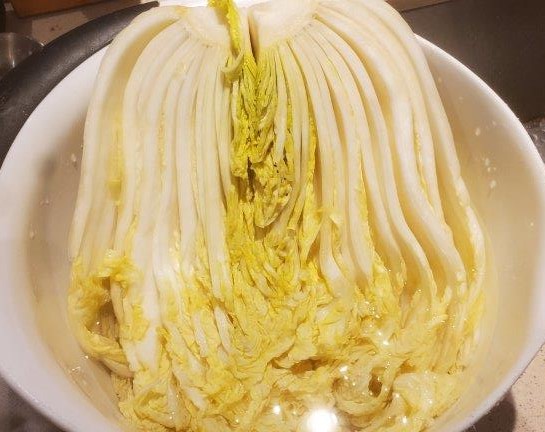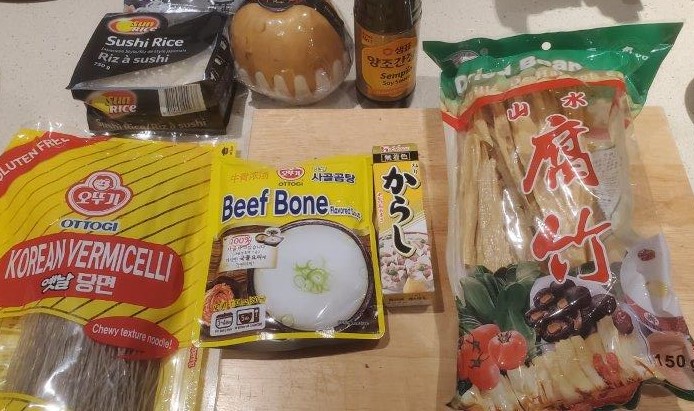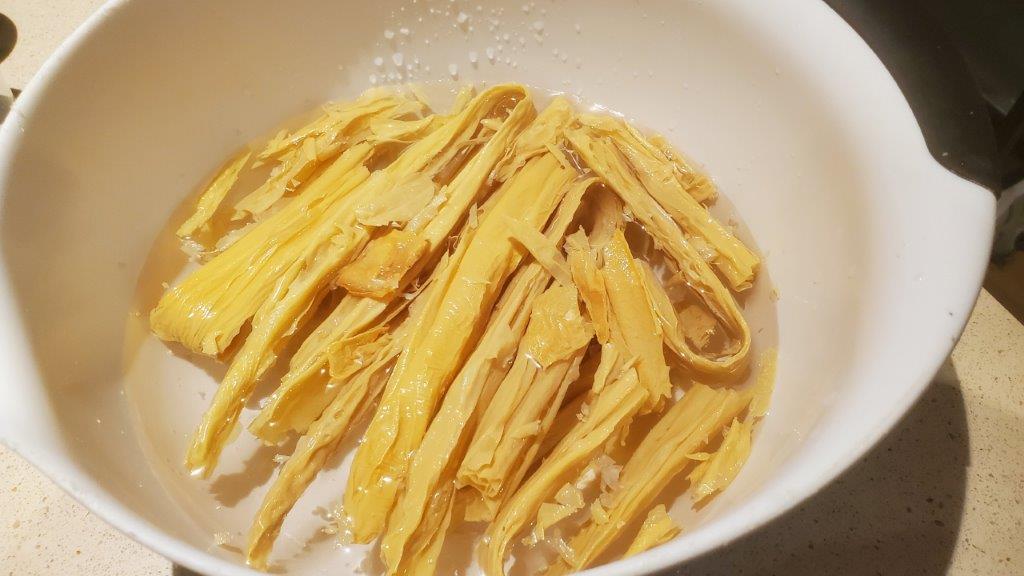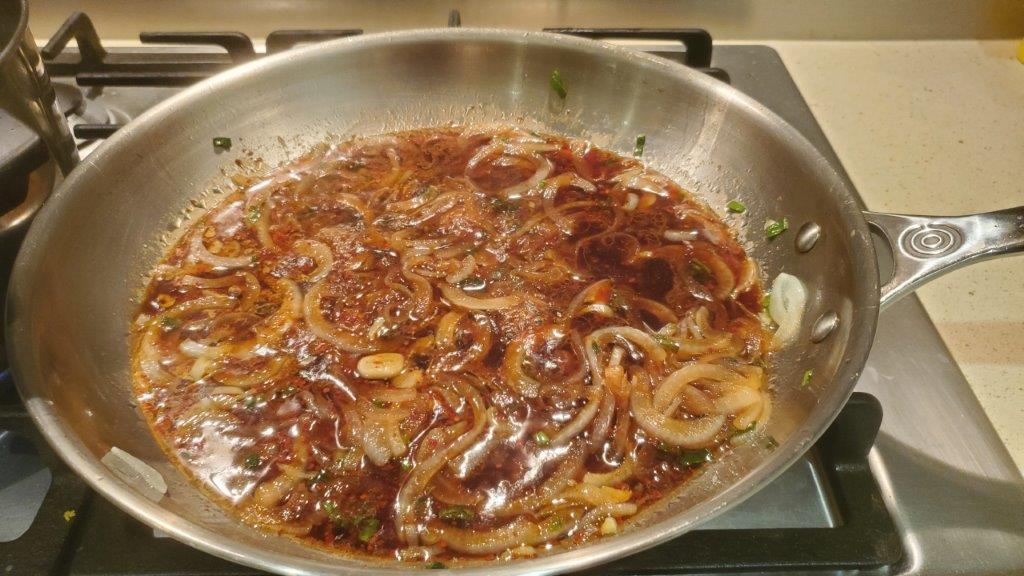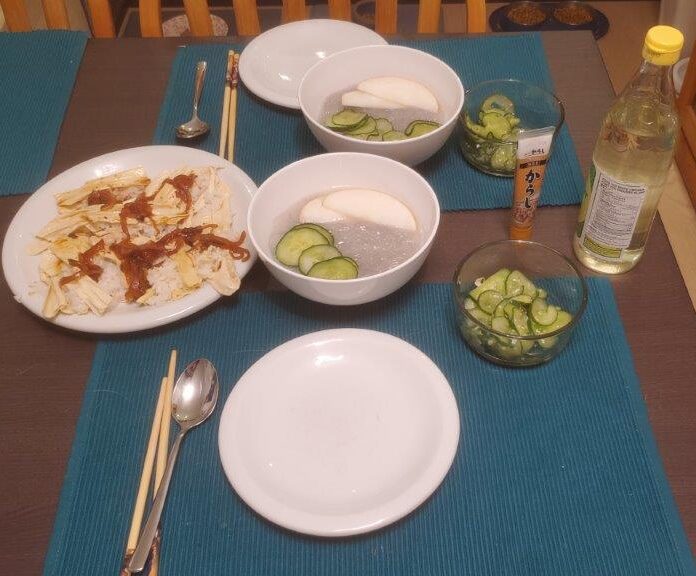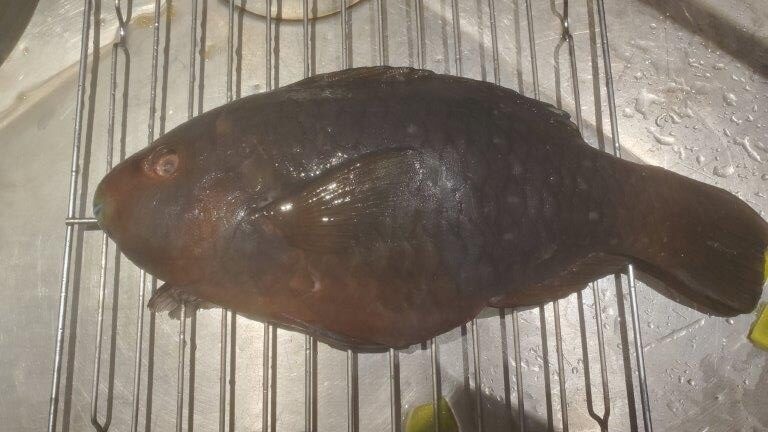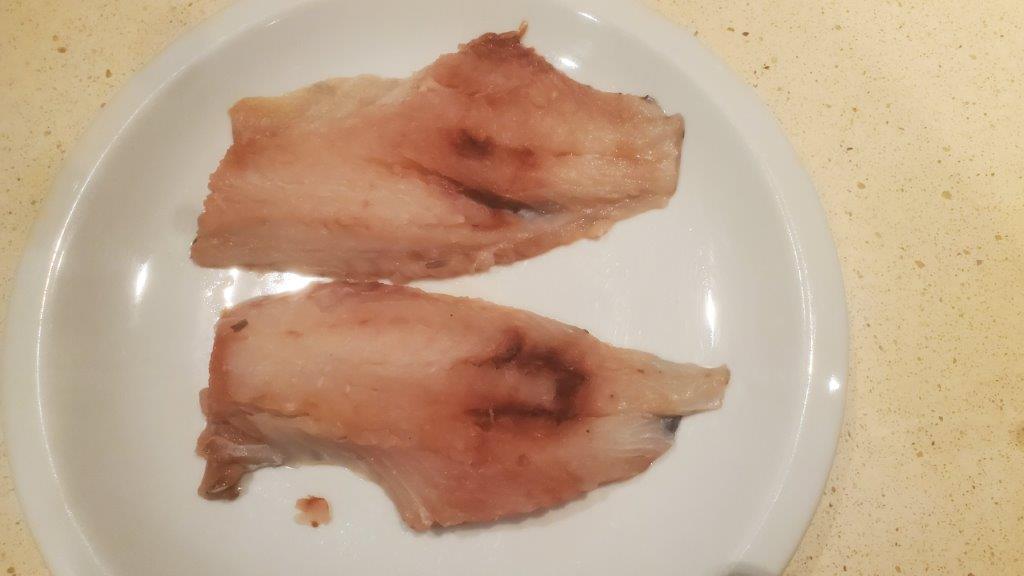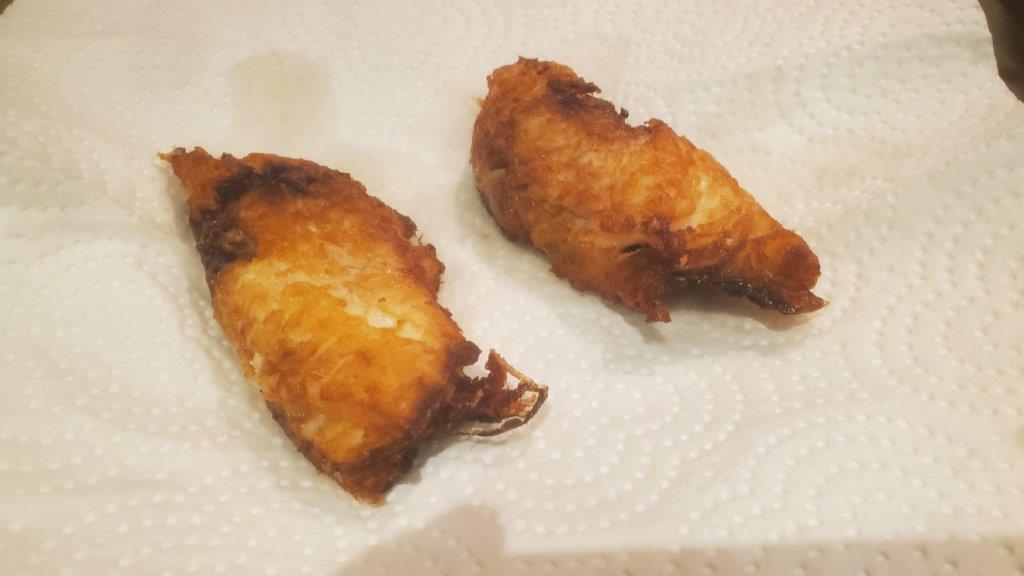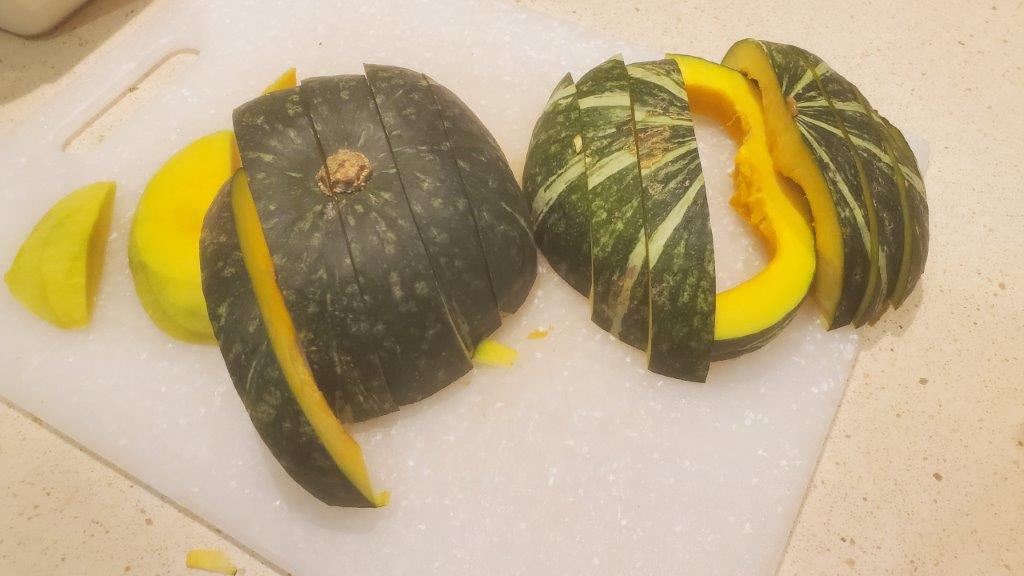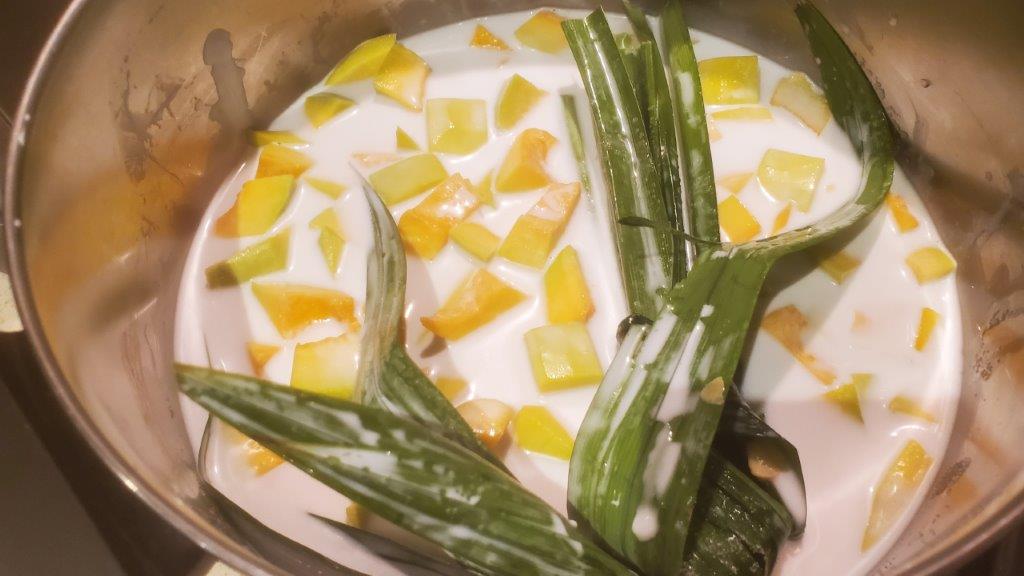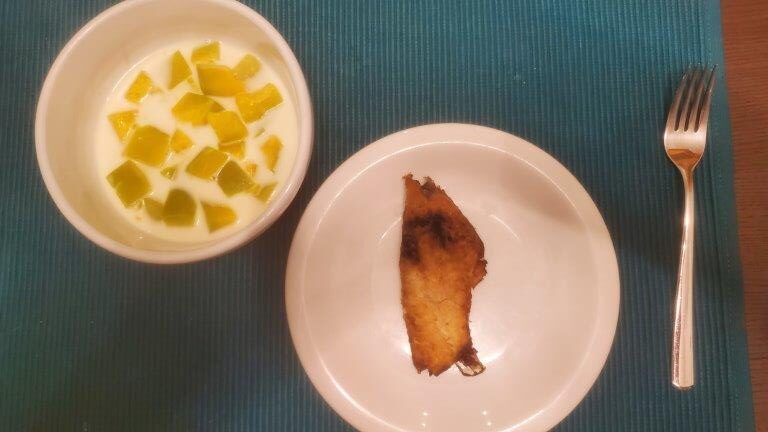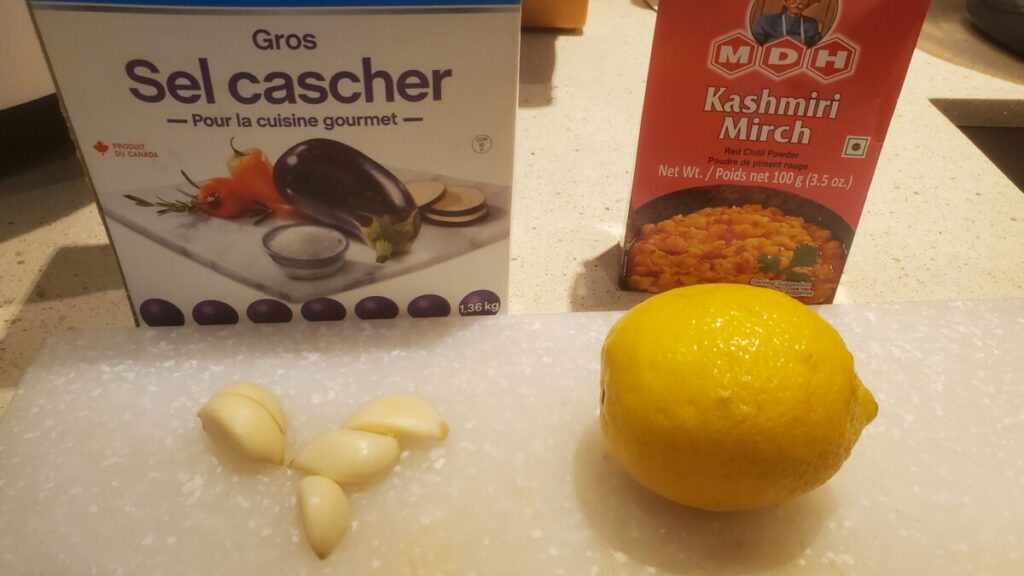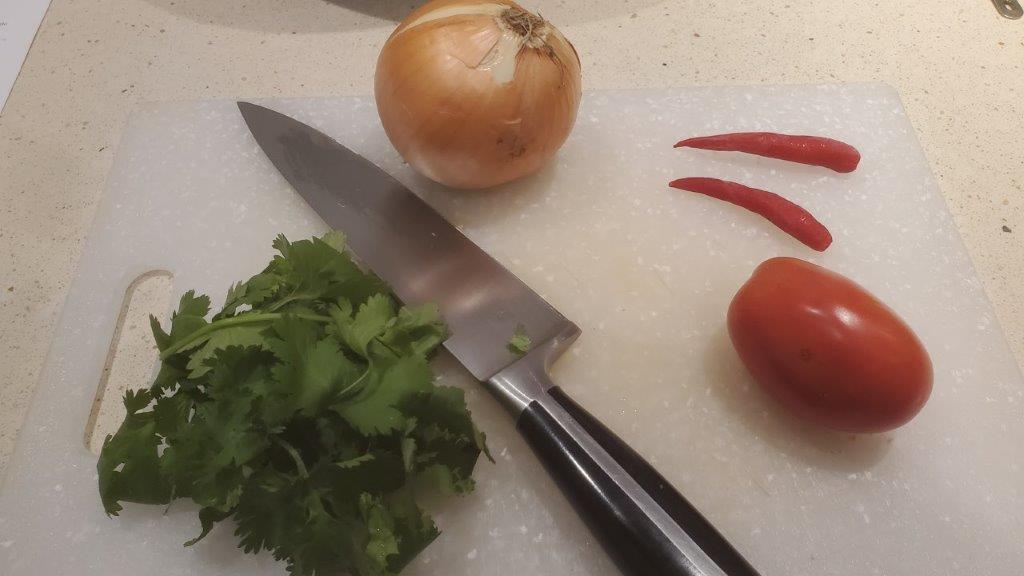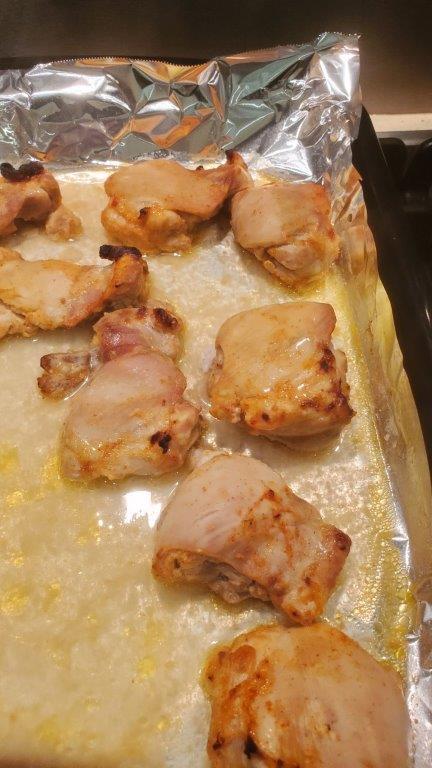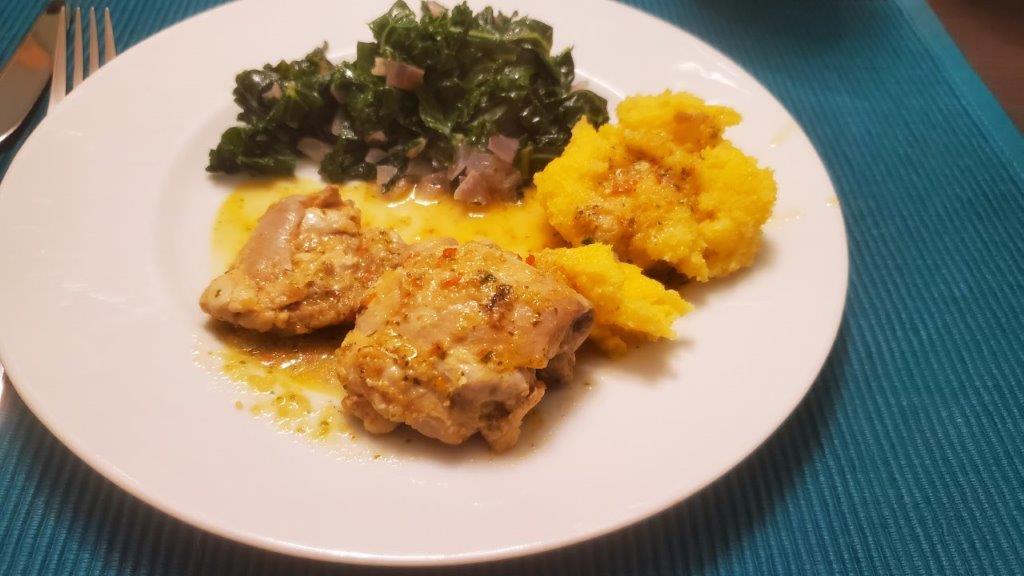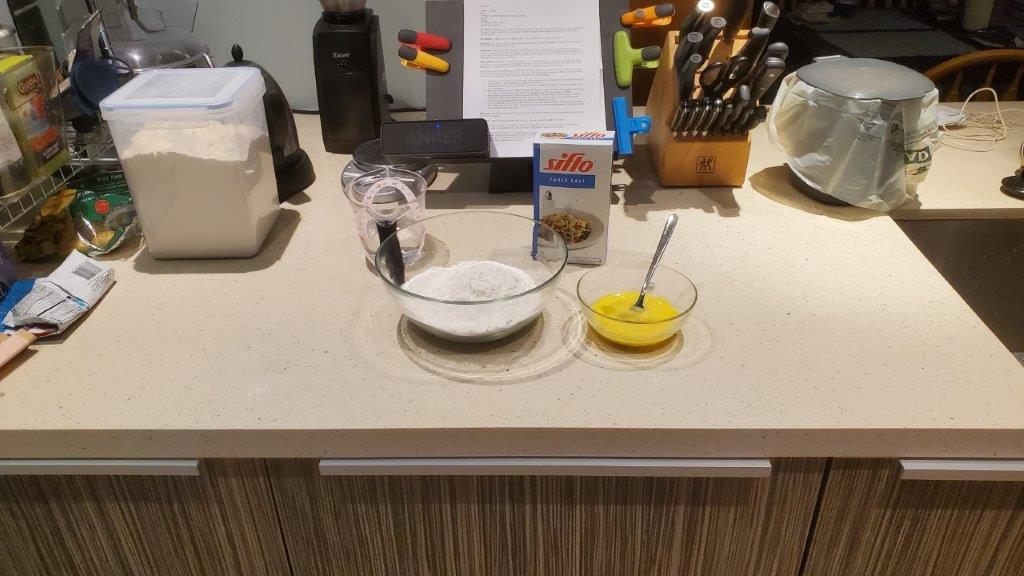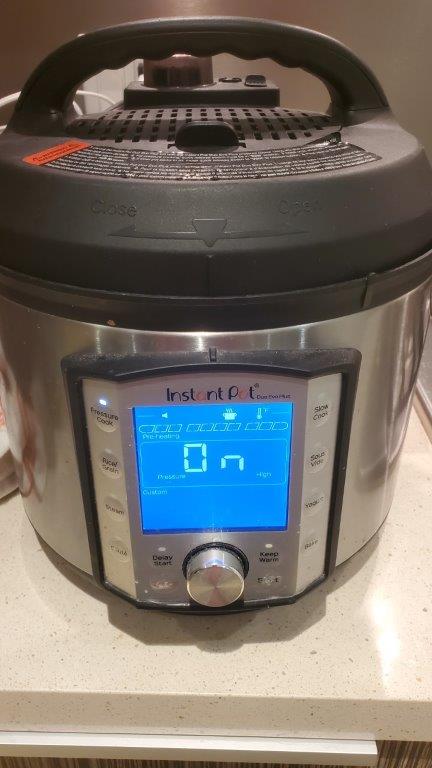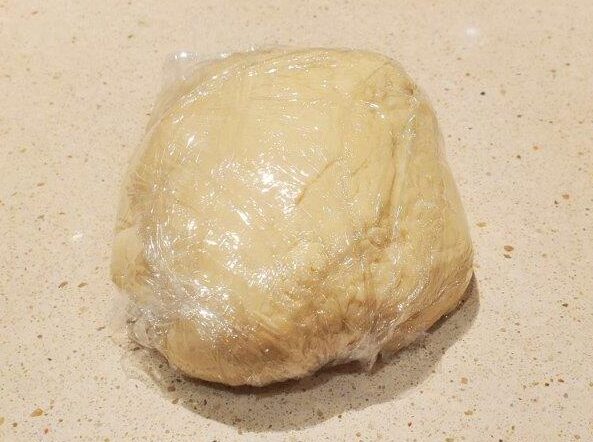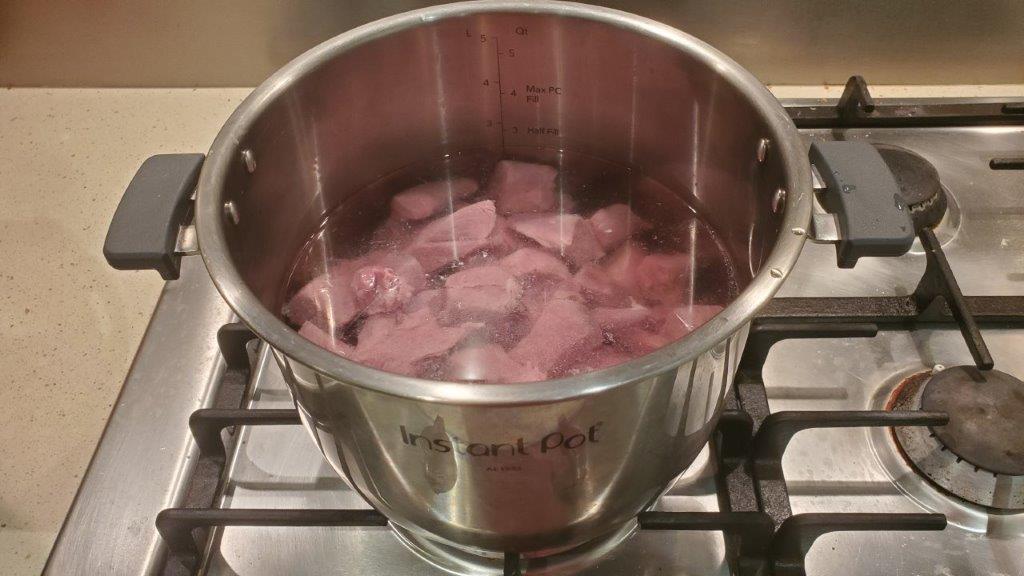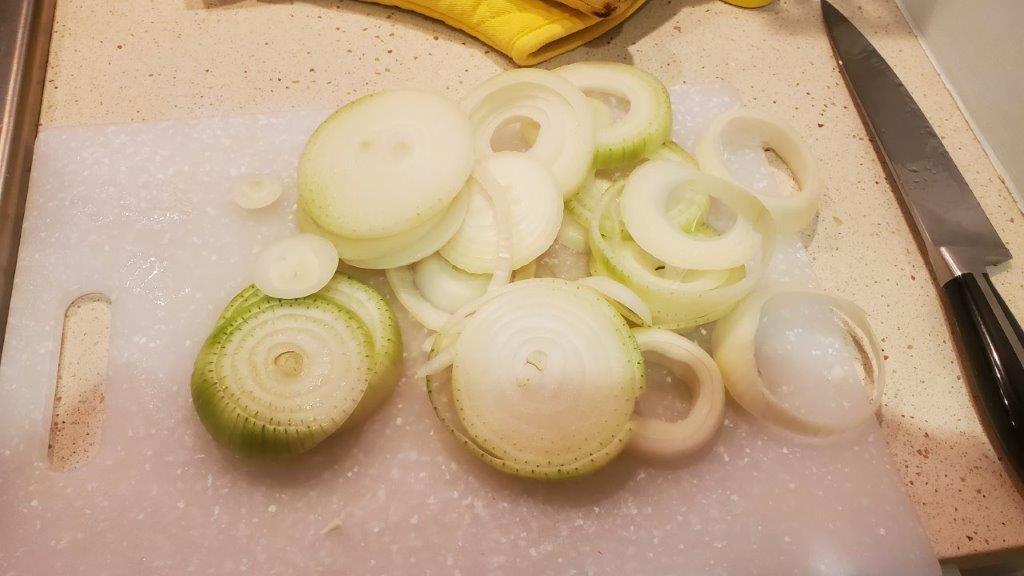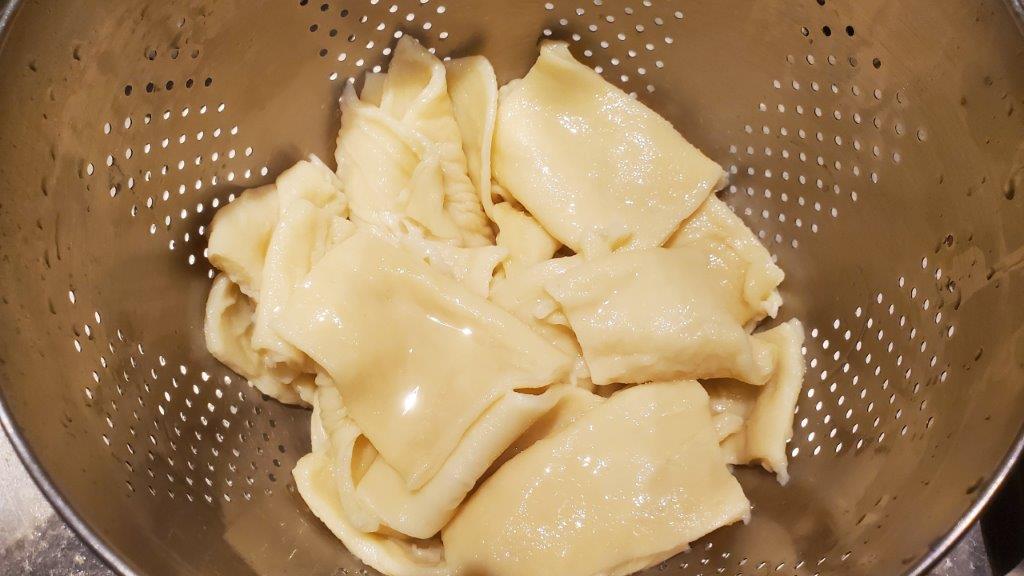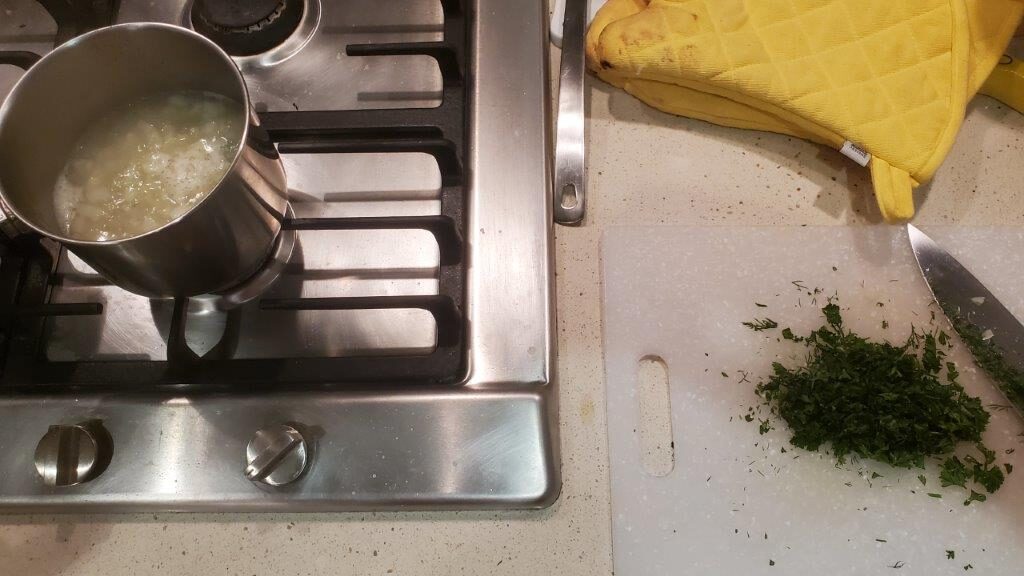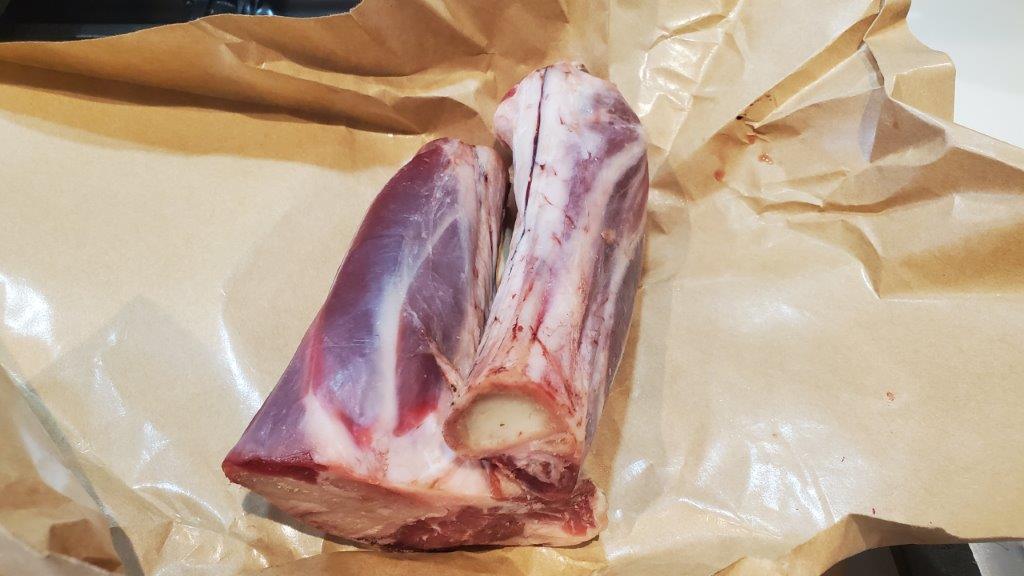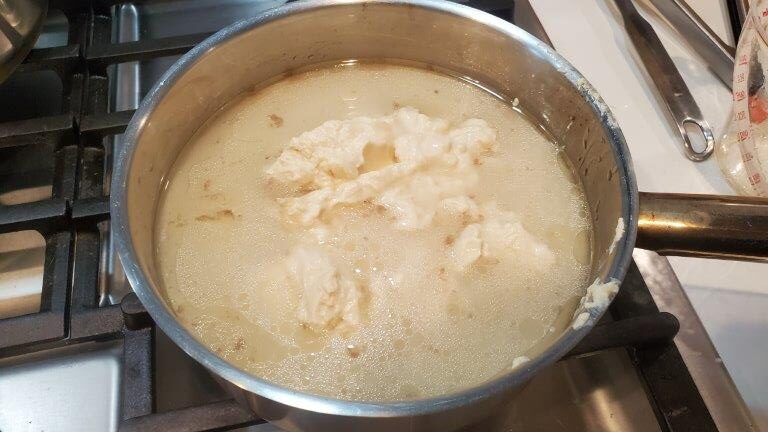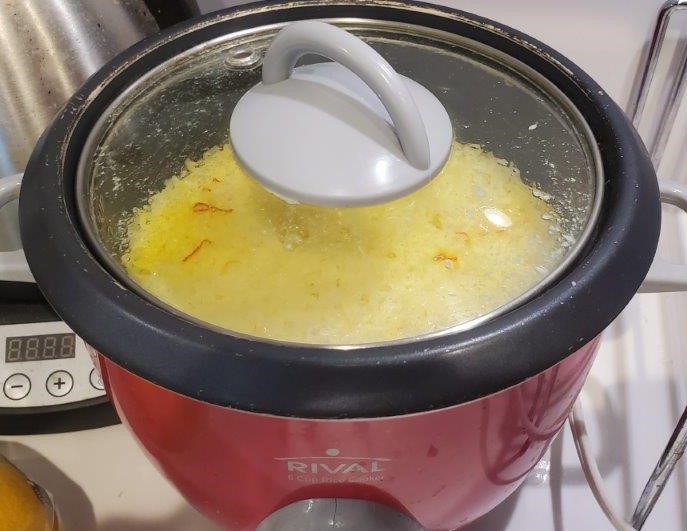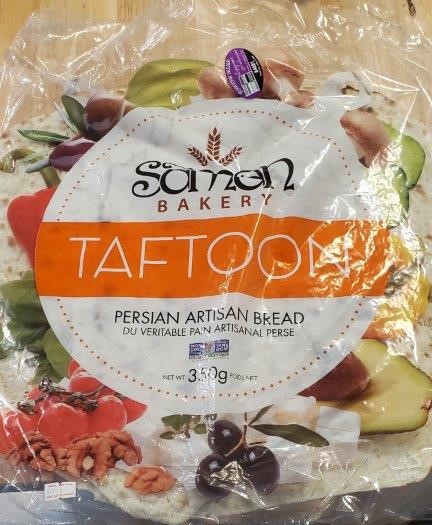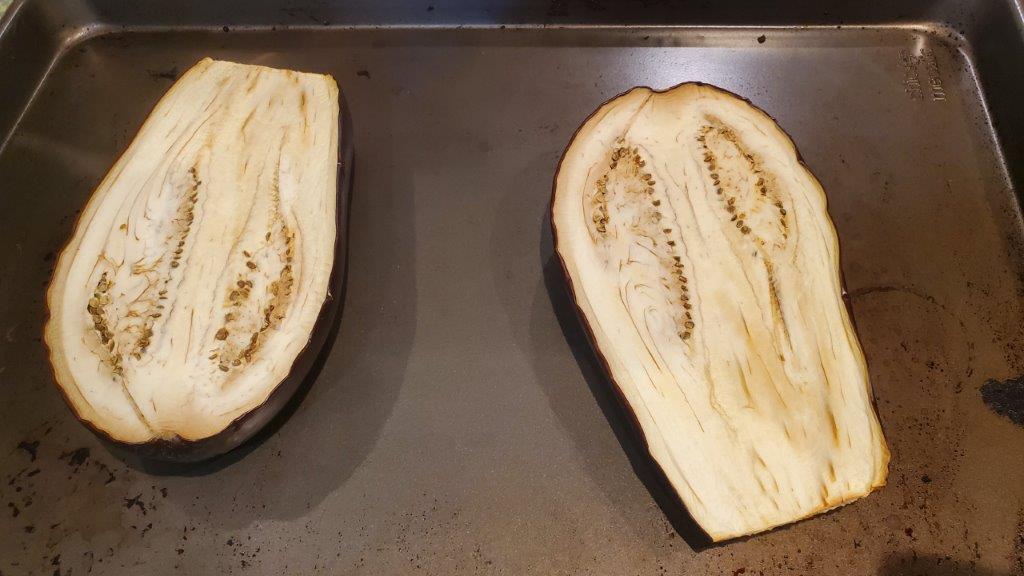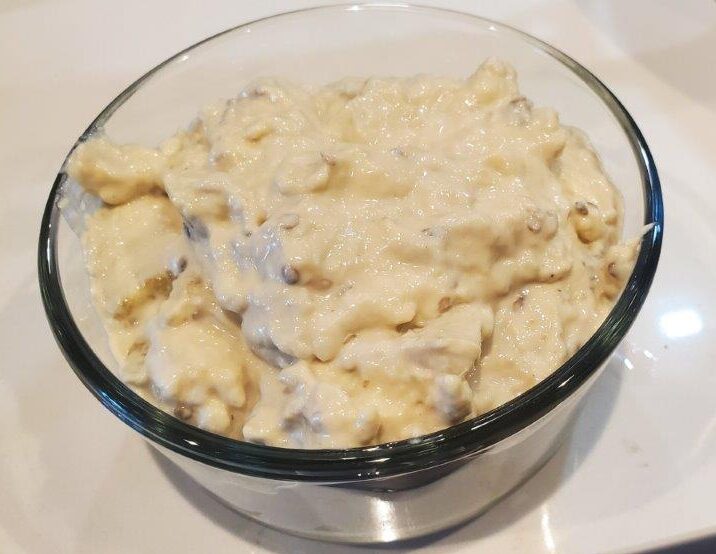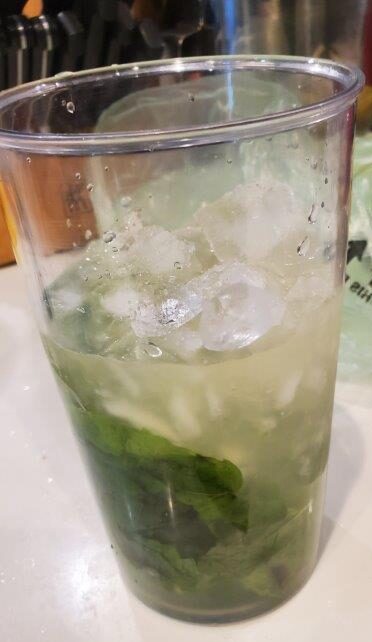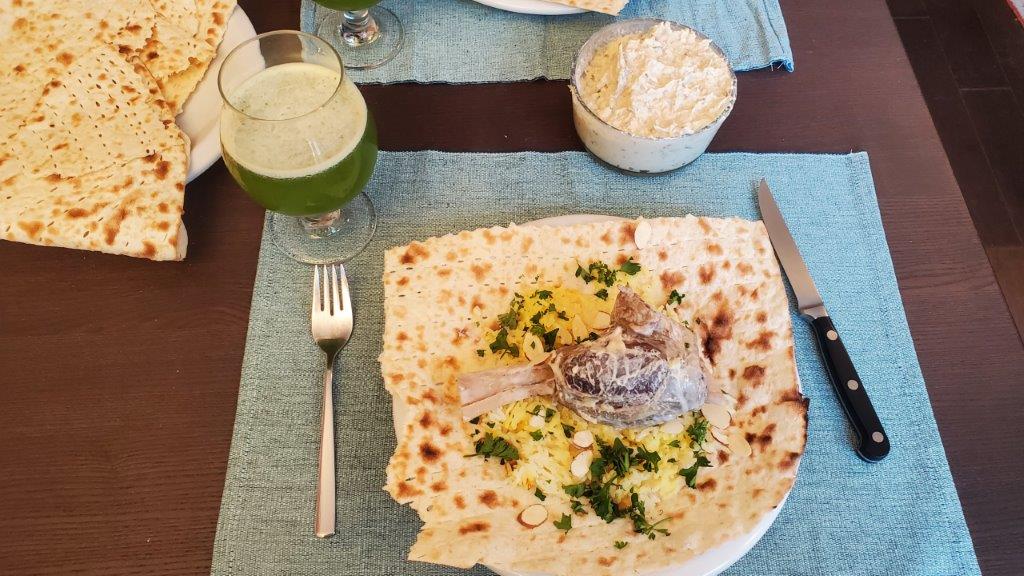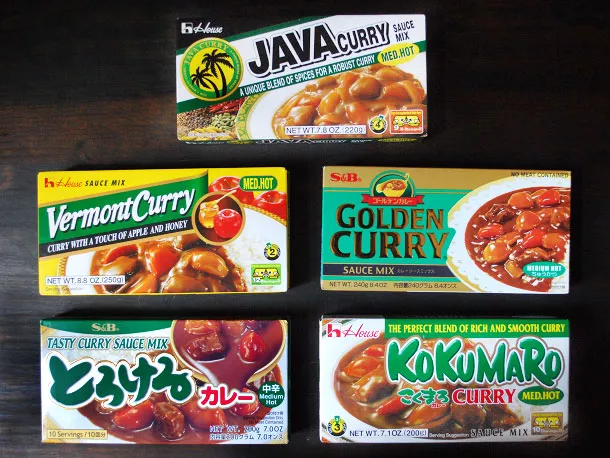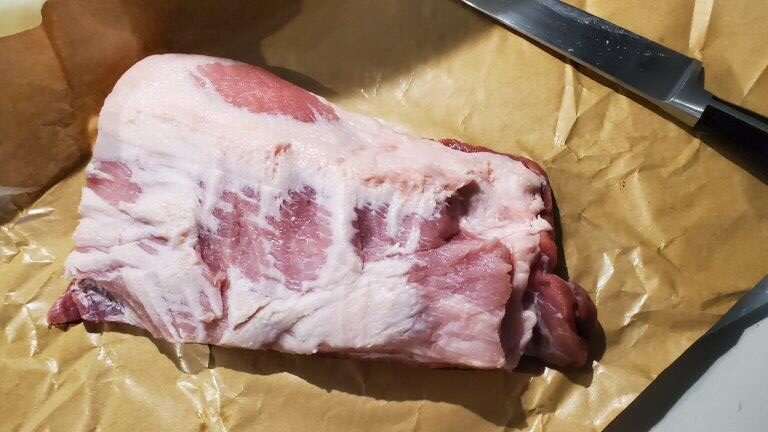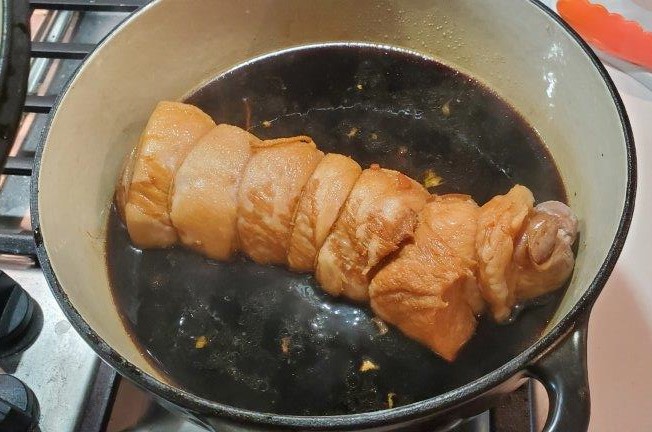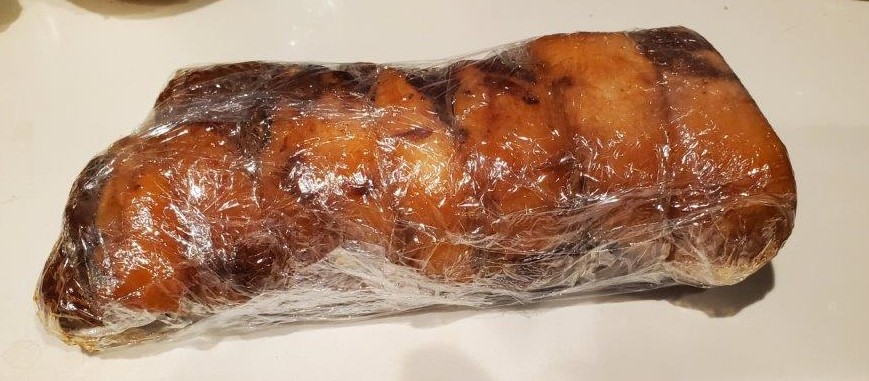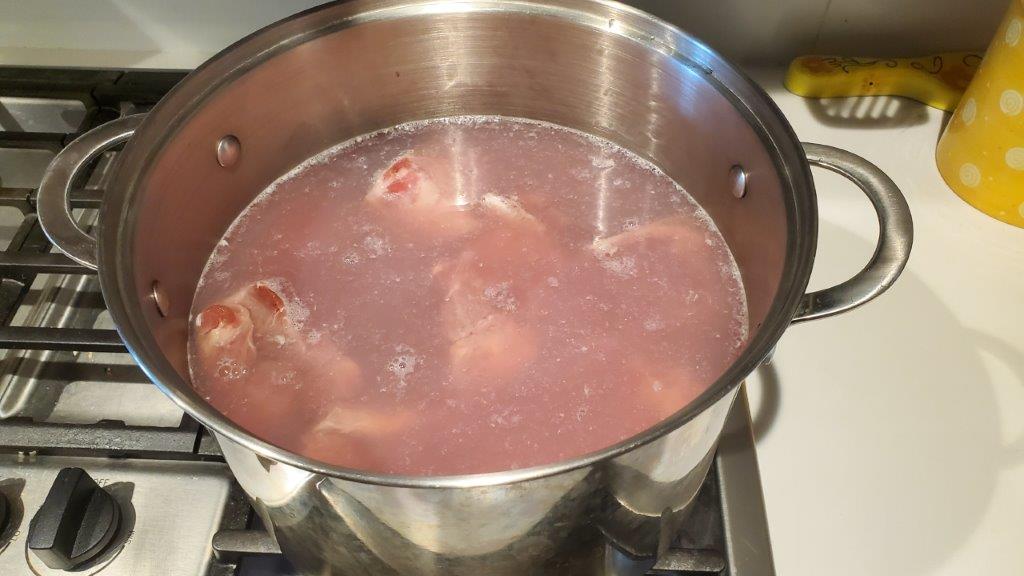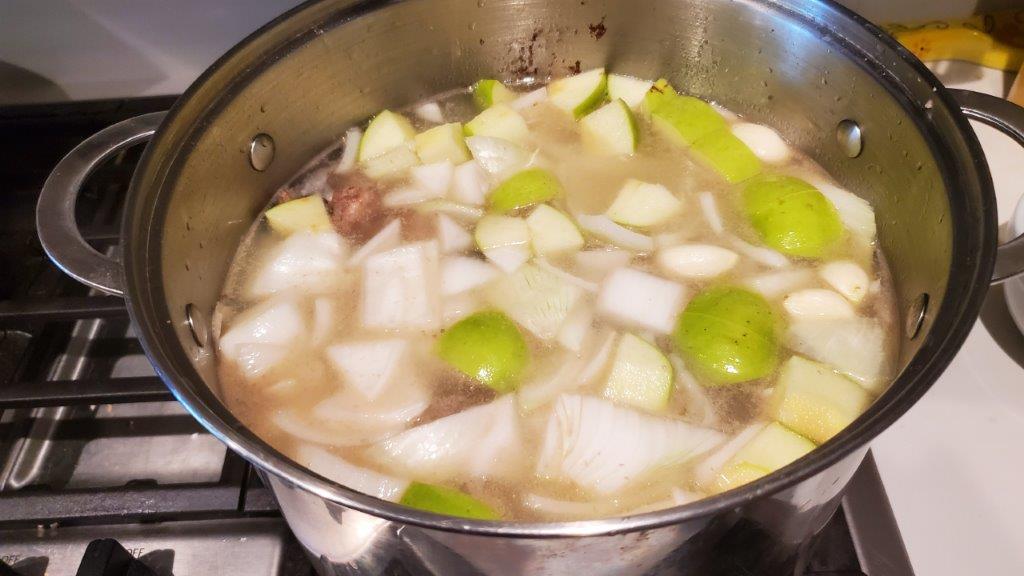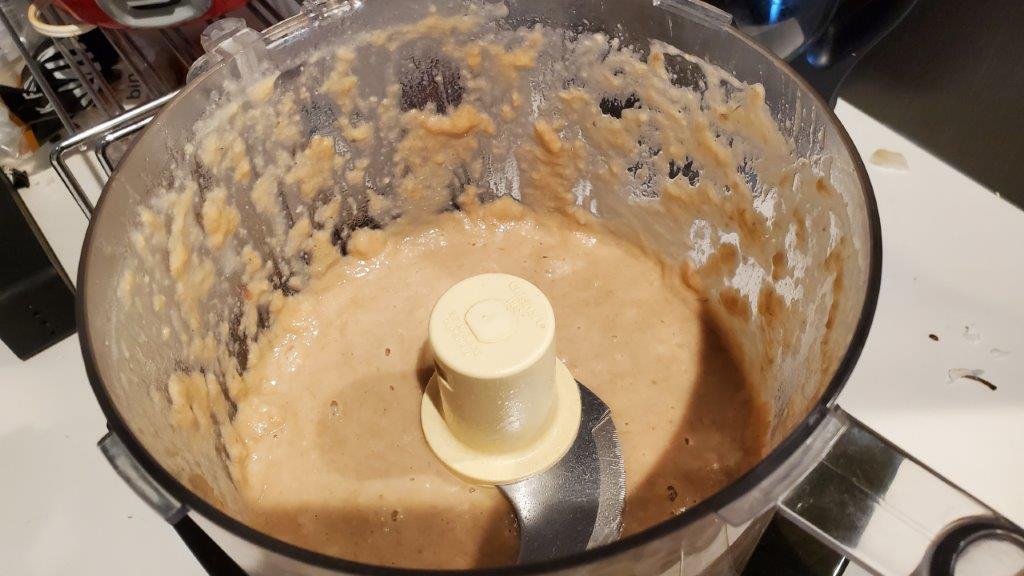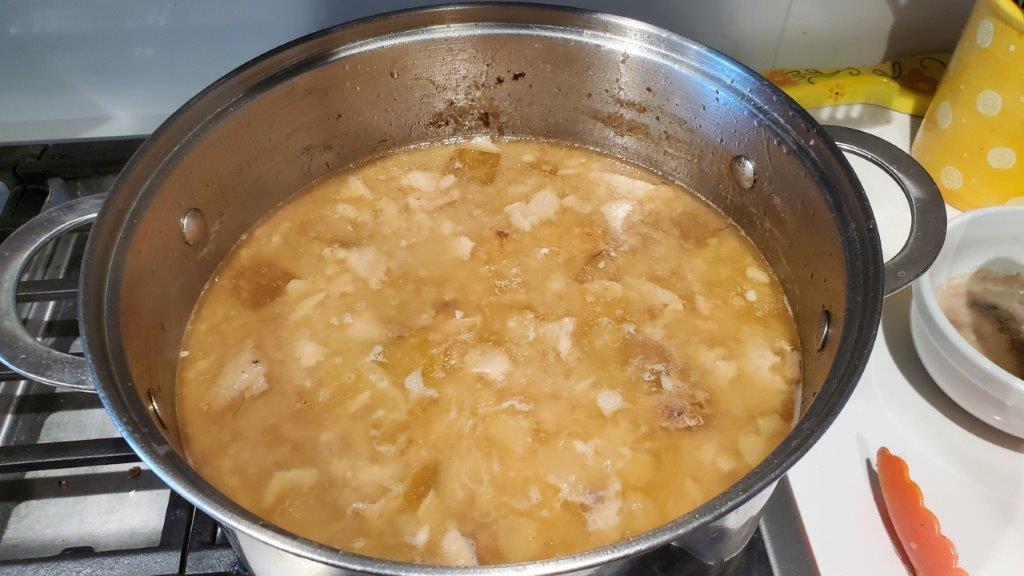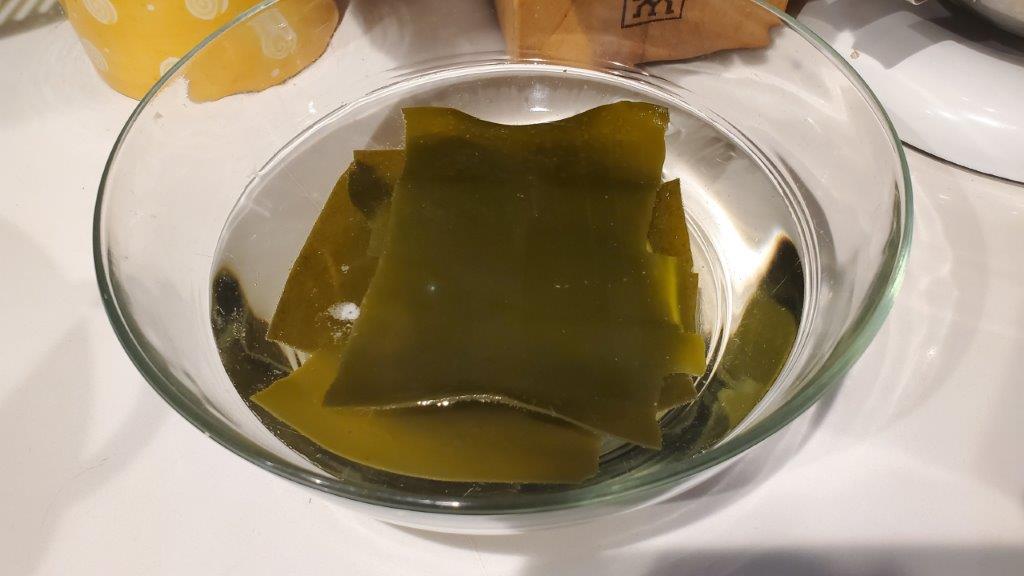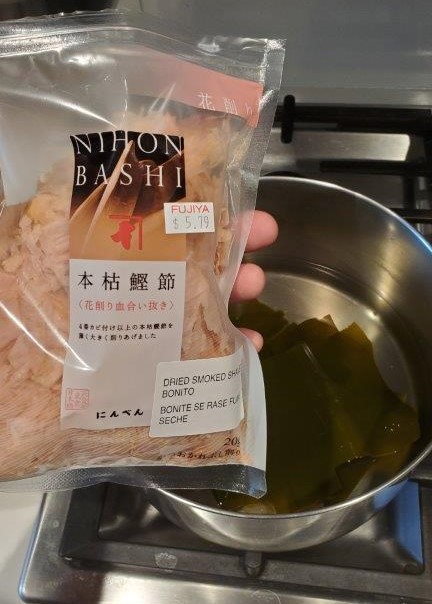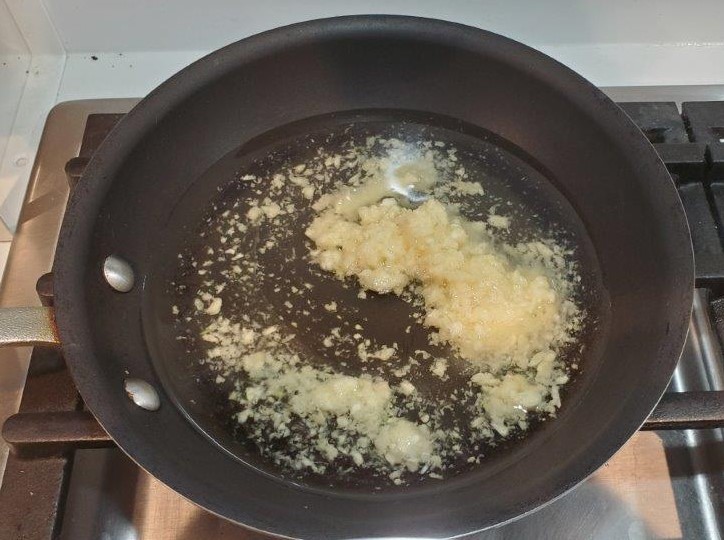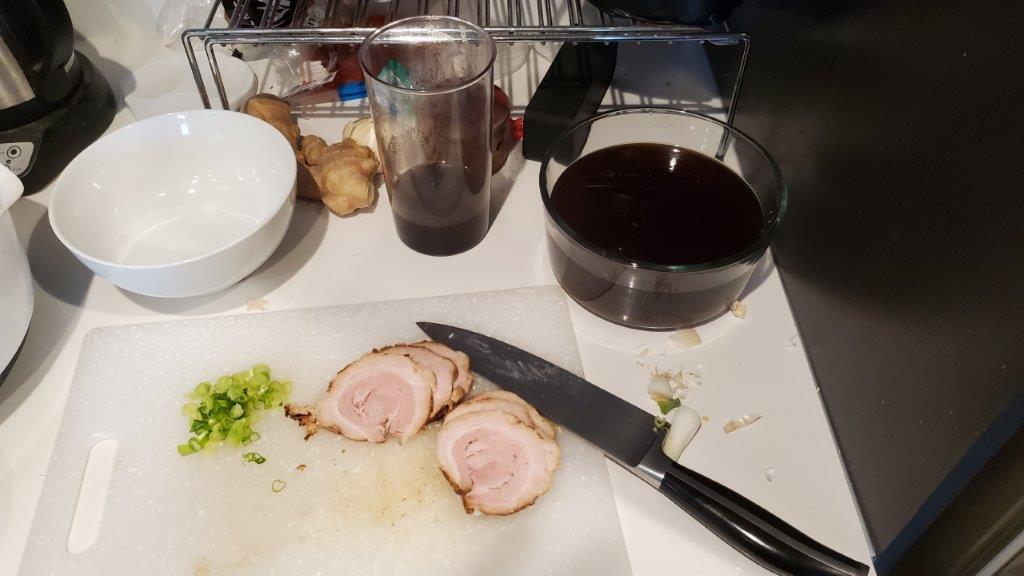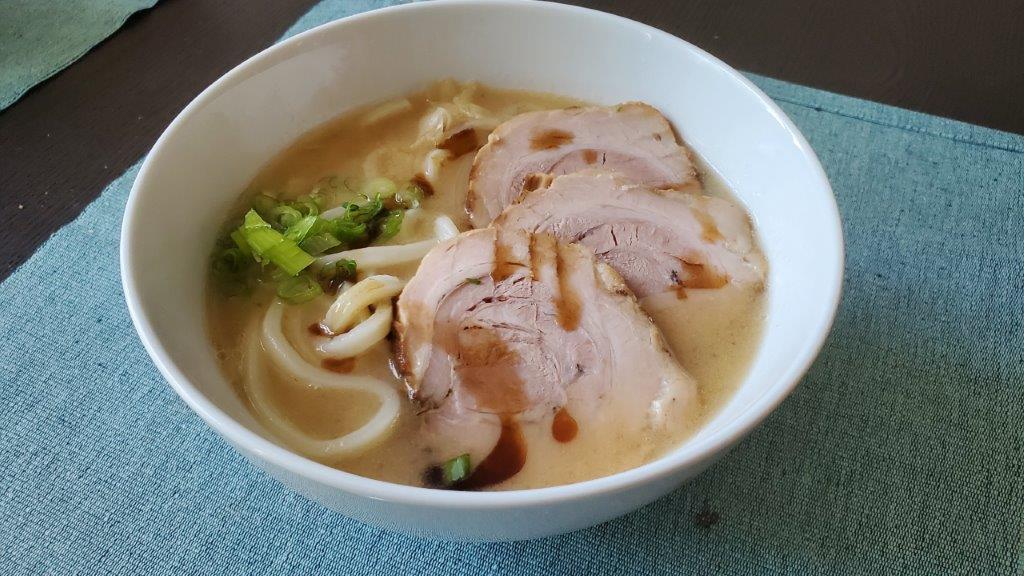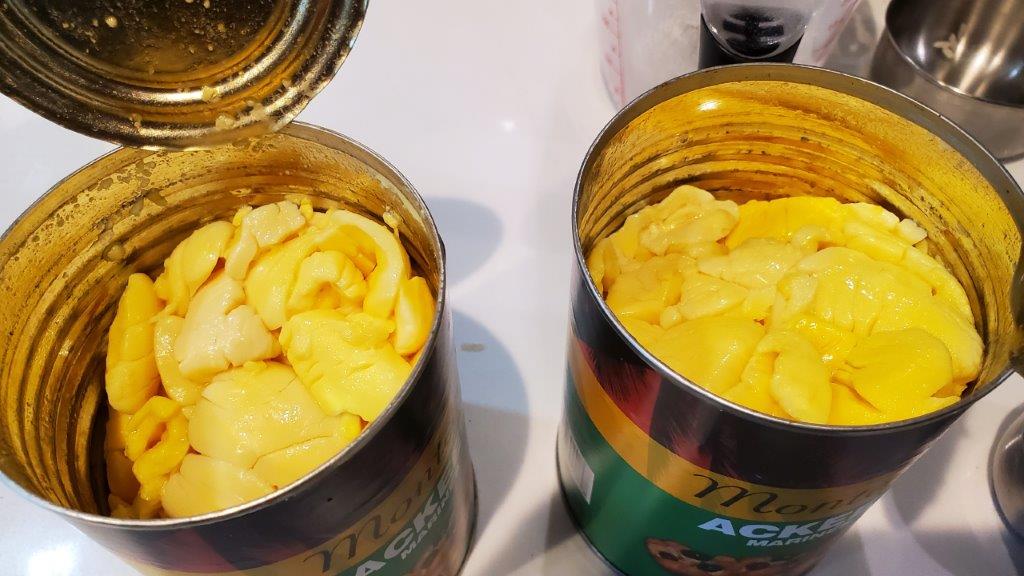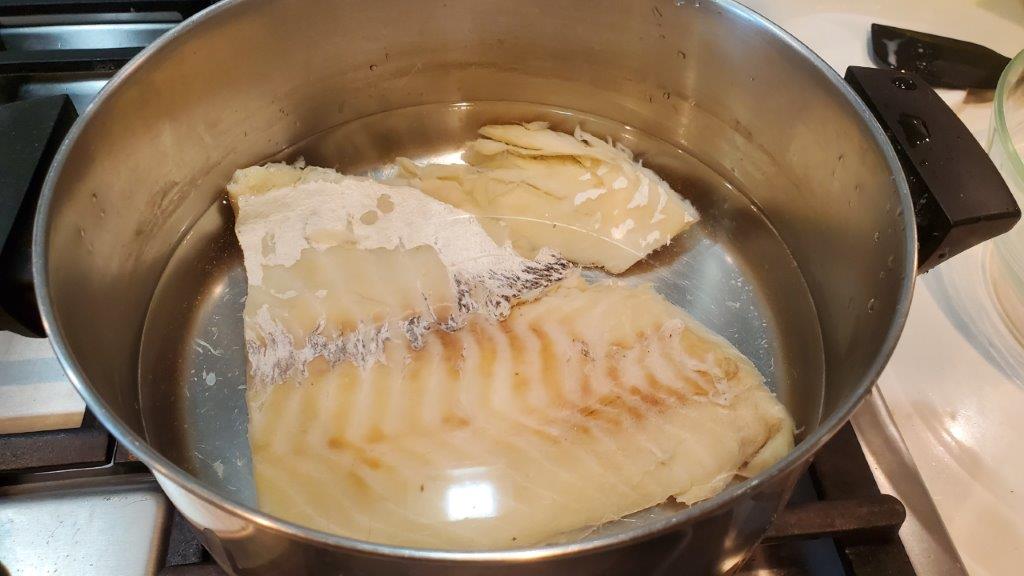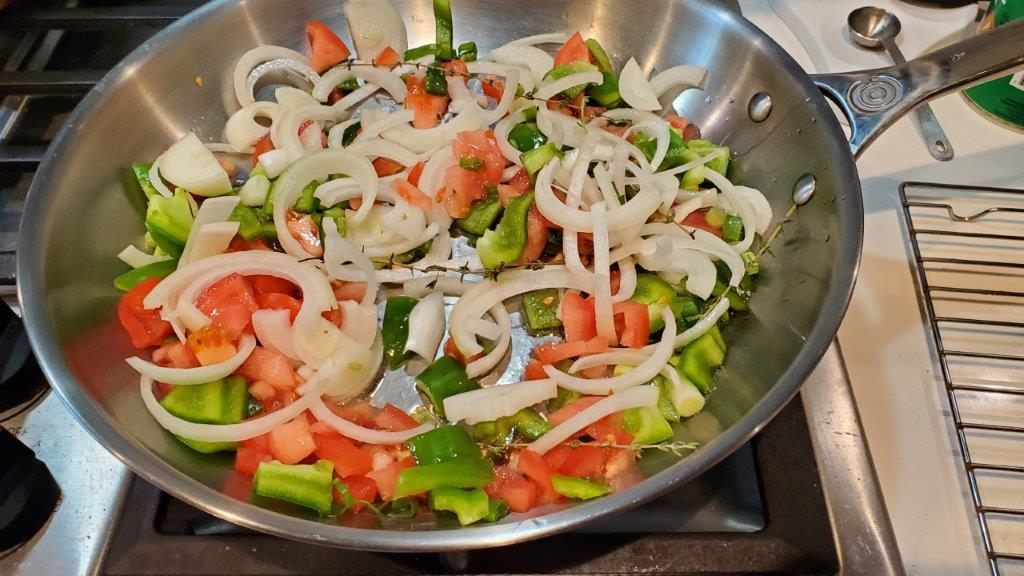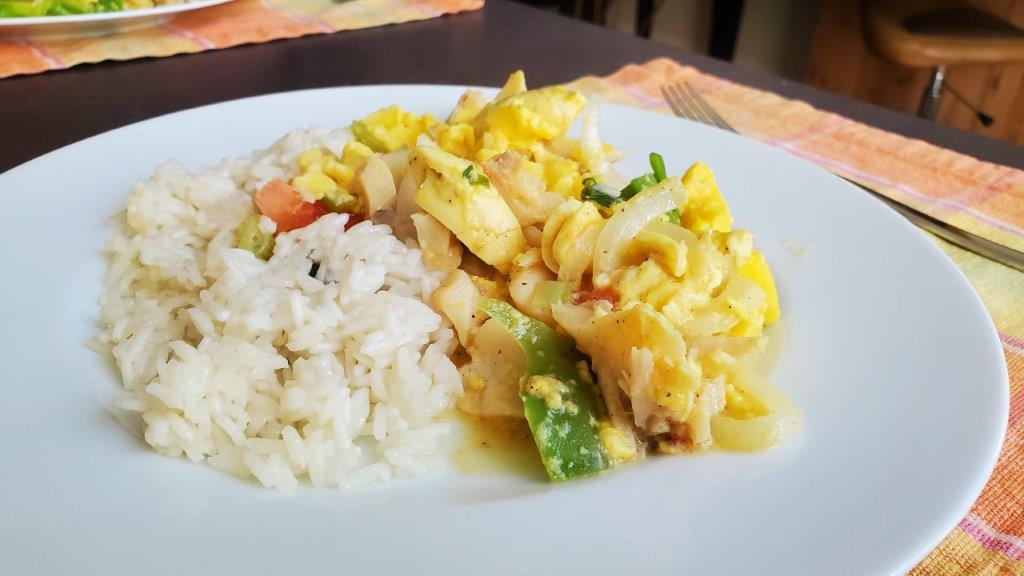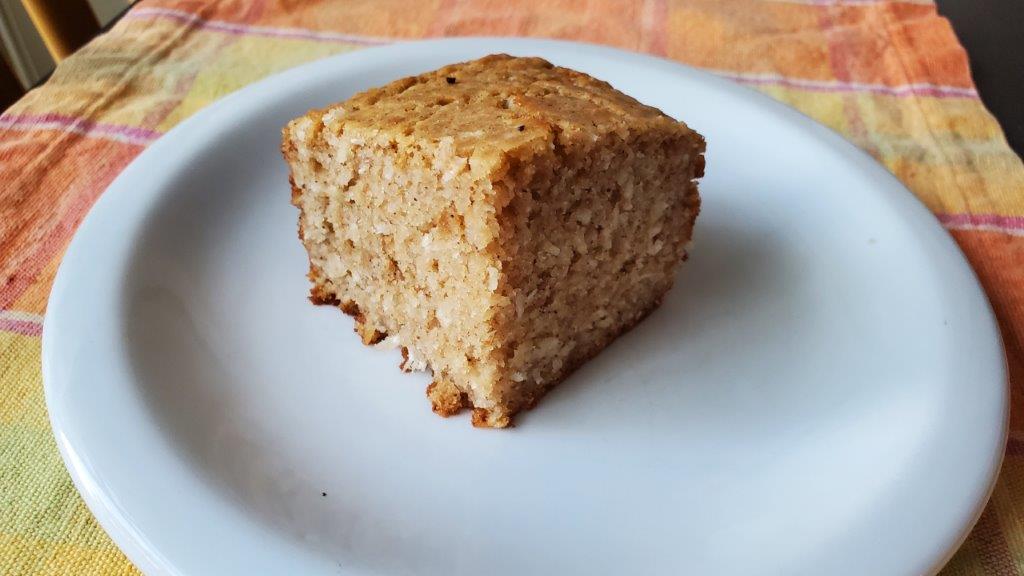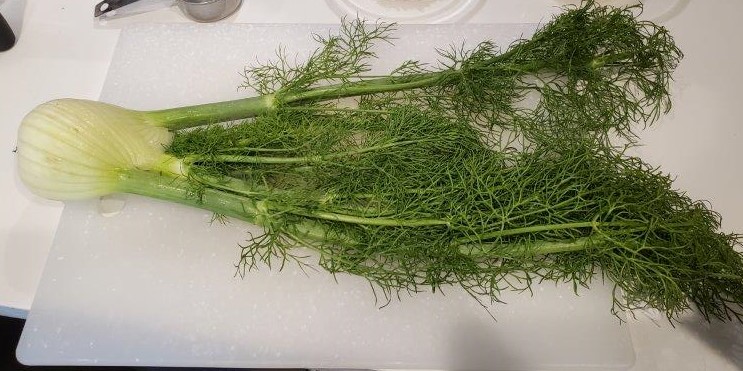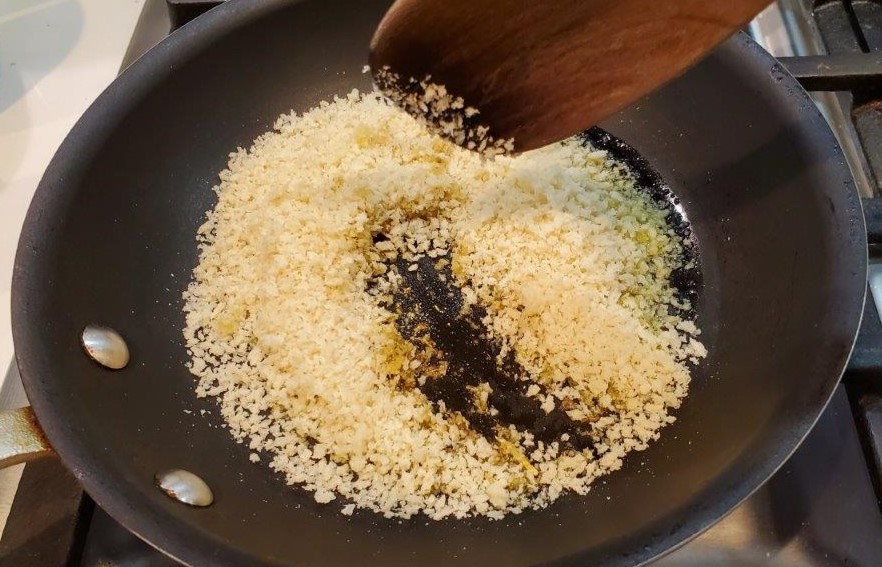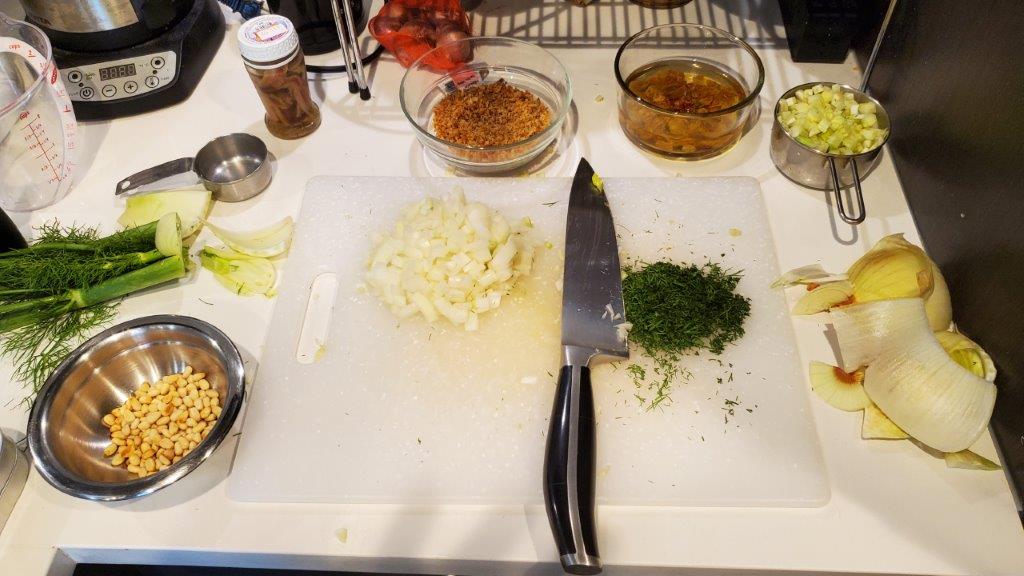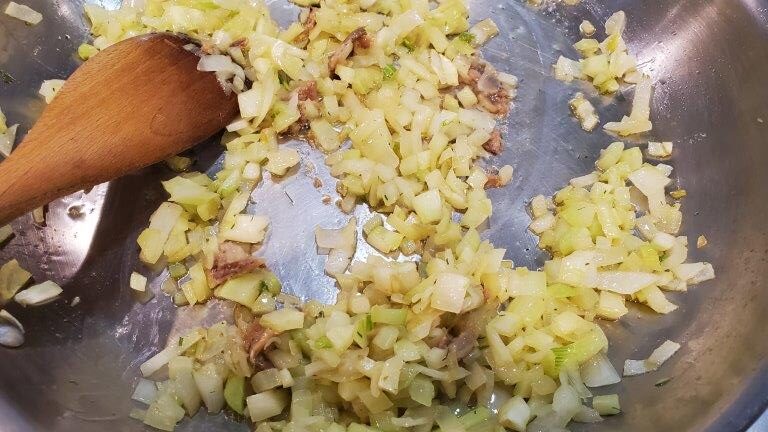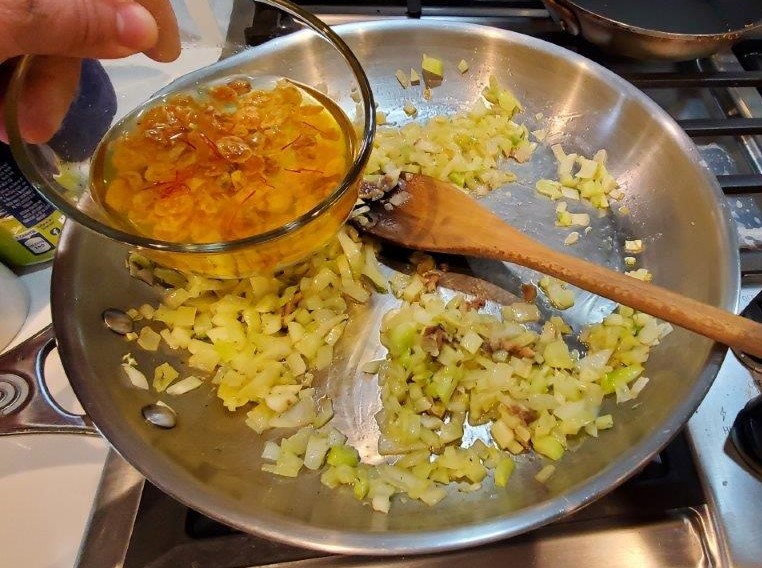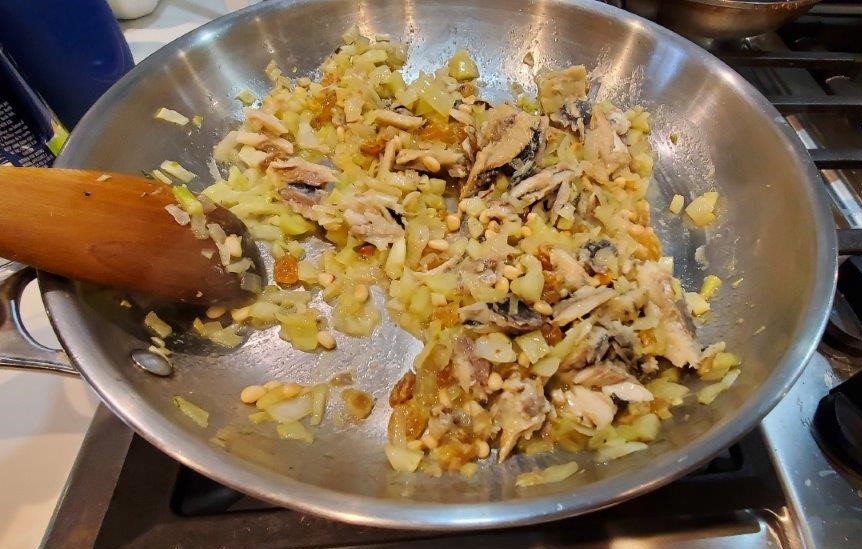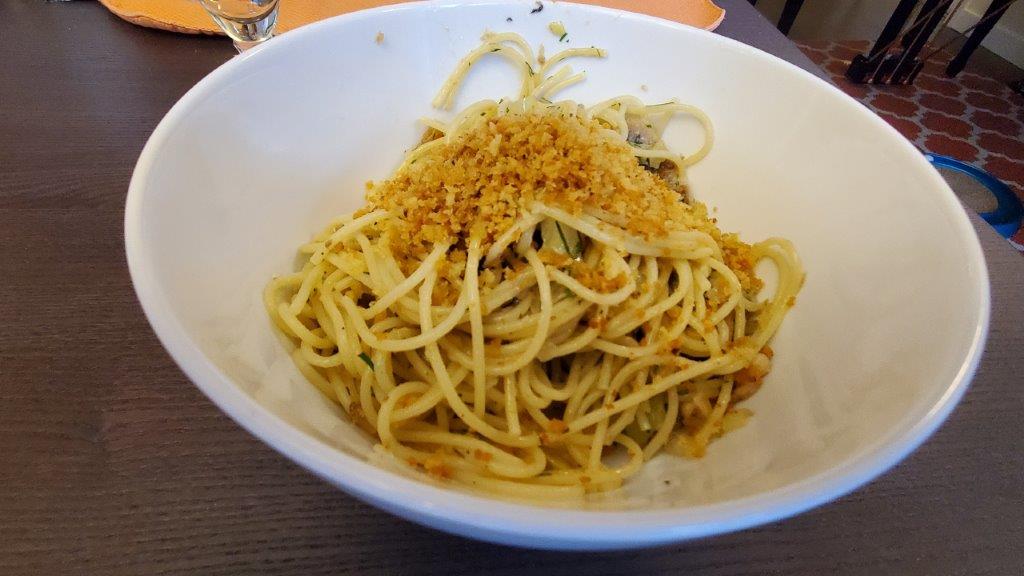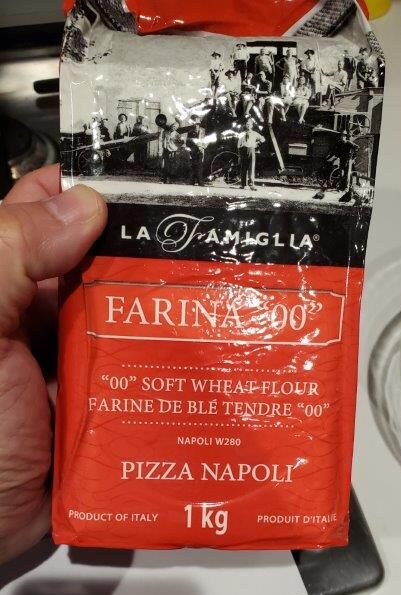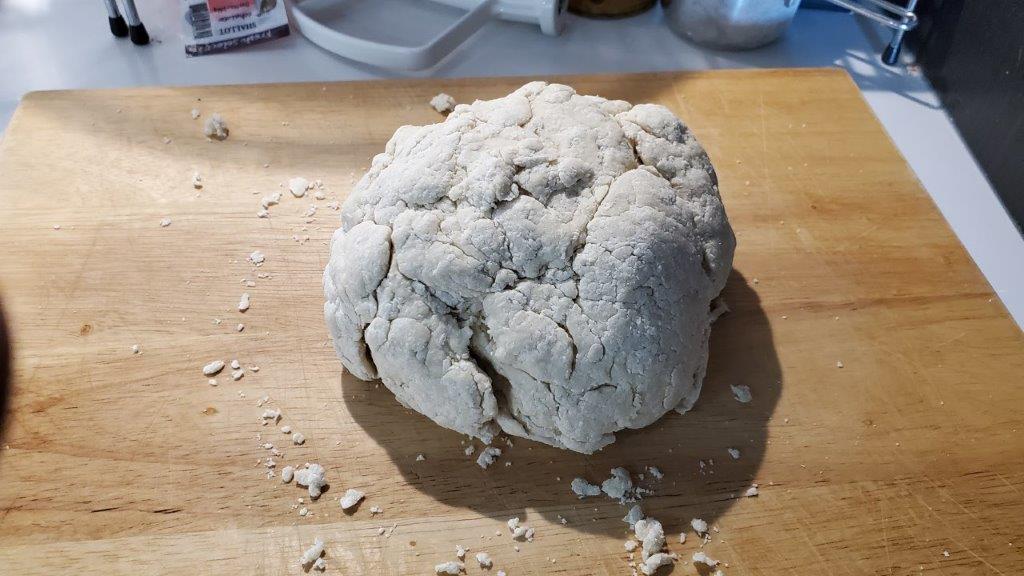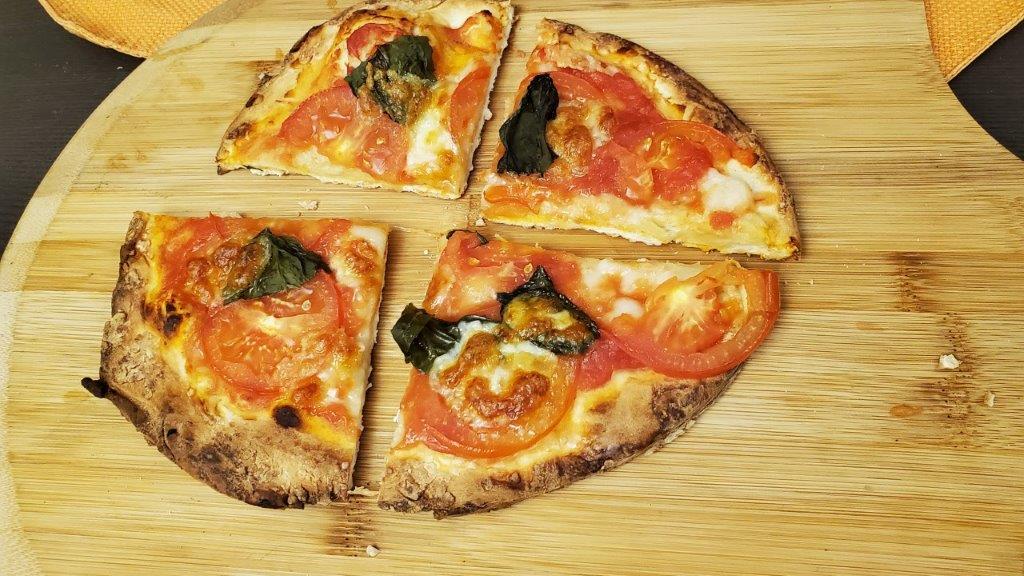If North Korea had a paucity of choices, South Korea is the opposite – there’s so much good stuff that it was hard to narrow it down. Korean Fried Chicken is definitely having a moment, at least in Vancouver – you can’t throw a stick without hitting a new place. (Although they have politely requested that people stop throwing sticks at their restaurants.)
However, deep frying at home sucks, so we decided to do something else.
First up, however, is the absolutely mandatory Korean side dish / condiment / national dish – kimchi! And the reason it’s first up is that it takes a bit of time to ferment properly. So with our meal scheduled for Saturday evening, we took Tuesday night to get the cabbage going.
I made another trip out for supplies, and discovered that the Korean supermarket not only sells WHOLE Napa cabbages, but you can also buy half and quarter portions, too. Which is a good thing, because half a Napa cabbage still represents about six pounds of cabbage! To start, you salt all the leaves and then leave it to soak for a few hours.
Ideally, you leave it to soak in a basin larger than the cabbage itself, but we don’t HAVE a basin larger than even HALF of one of these beasts.
Once it’s ready, you cook some glutinous rice flour and sugar in water to make a sticky base for the sauce, the rest of which consists of garlic, ginger, onion, fish sauce, fermented shrimp, and a LOT of gochugaru. (Korean red pepper flakes.) Like, a LOT a lot.

Or, at least, you’re SUPPOSED to put in the fermented shrimp, and not just buy them and then leave them in the freezer like an idiot. Sigh. (We added a little bit to the Kimchi right before serving, at the suggestion of our guest.)
Once the sauce is mixed, you also add in some thinly sliced carrot, green onion, and daikon radish. Also something called “water dropwort,” but in this case the store didn’t have it. And then you get messy!
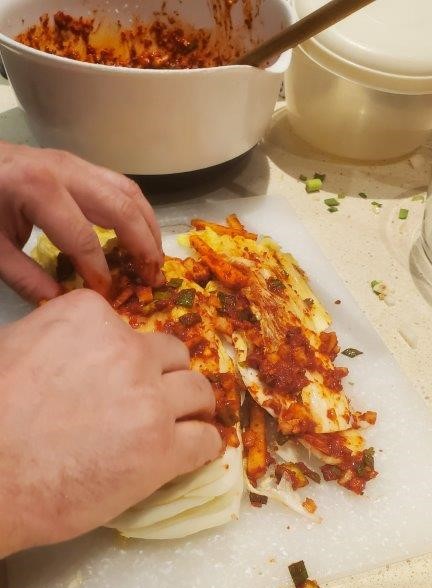
To do this right, you have to get in there and smear sauce on each and every cabbage leaf. It takes a while. But once you’re done, that’s it! Kimchi goes into containers on the counter to ferment for a day or two, and then into the fridge.
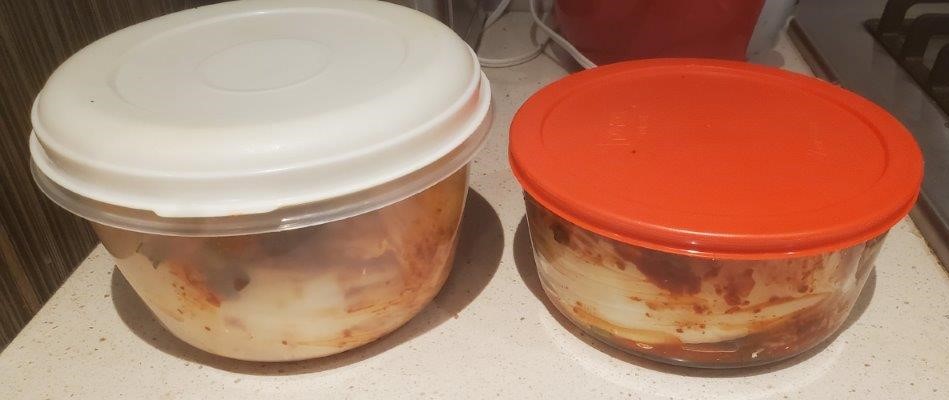
For our main dish, we’re making bulgogi. Turns out this literally means “fire meat.” Can’t argue with that. But also can’t actually use fire, since we’re on the fourth floor now. But that’s a problem for Saturday us. First, FRIDAY us has to make up a tasty marinade.
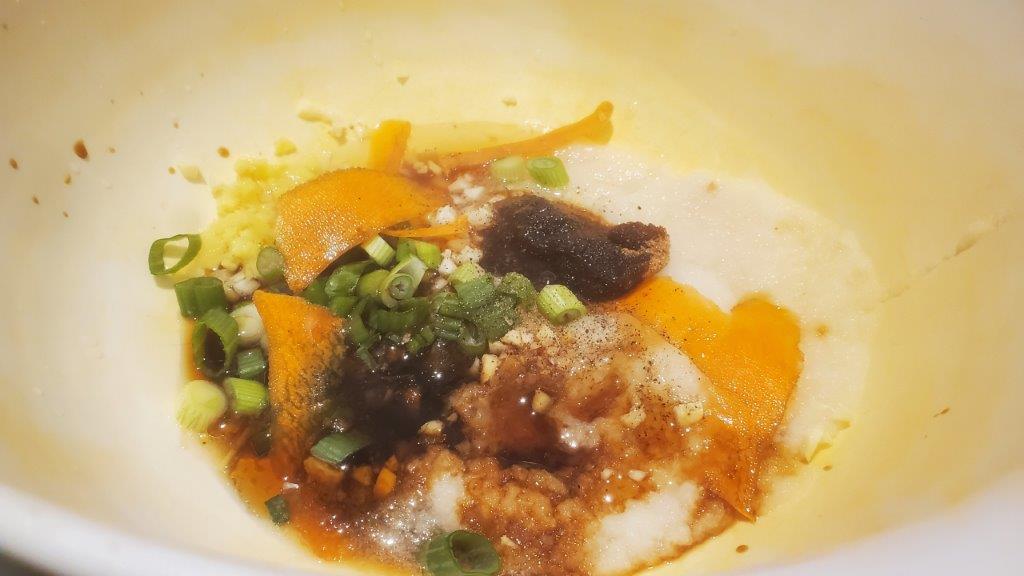
Obviously, there’s many different recipes. The one we went with included Korean pear, onion, garlic, ginger, green onion, soy sauce, brown sugar, sesame oil, black pepper, and carrot. As it turns out, pureed pear looks EXACTLY like pureed onion, but you don’t want to get those two confused!
We mixed that up, smeared it over some nice thinly sliced top sirloin, and that went into the fridge as well.
Saturday, it was time to put everything together, as well as make our side dishes. And for extra special nervous making, we had invited an actual Korean person over to share the meal! For those keeping score at home, this is the third time we have done this – the first two were Brazil and Italy.
As mentioned last week, Korean meals typically have a range of side dishes, or banchan. If you count rice (you probably shouldn’t) we’d be having three. The only interesting thing to say about the rice is that short-grain sushi rice, like we used last week, appears to be the standard tabletop rice in Korea.
Next up, a nice simple dish with bean sprouts. A quick blanch in boiling water, then mix together with garlic, fish sauce, and sesame oil. Done.
Our final banchan involves potatoes. While potatoes are originally native to the Americas, they are at this point a staple just about everywhere, and that definitely includes Korea. This is another simple one – fry potatoes and onions in oil, and then glaze with soy sauce, garlic, and sugar. (The picture was taken in the “pre-glazing” portion of the program.)
For the very final step, the bulgogi came out of the fridge, and was slapped onto a hot cast iron grill to quickly cook. So quick, that I didn’t even remember to snap a picture.
Given that, let’s skip to the final spread!

Clockwise from upper left, we have lettuce for wrapping, kimchi, soy sauce potatoes, chewy sweet rice flour desserts that our guest brought, seasoned bean sprouts, bulgogi, and rice. Looks pretty tempting, doesn’t it? Here’s a pile of everything on a plate:
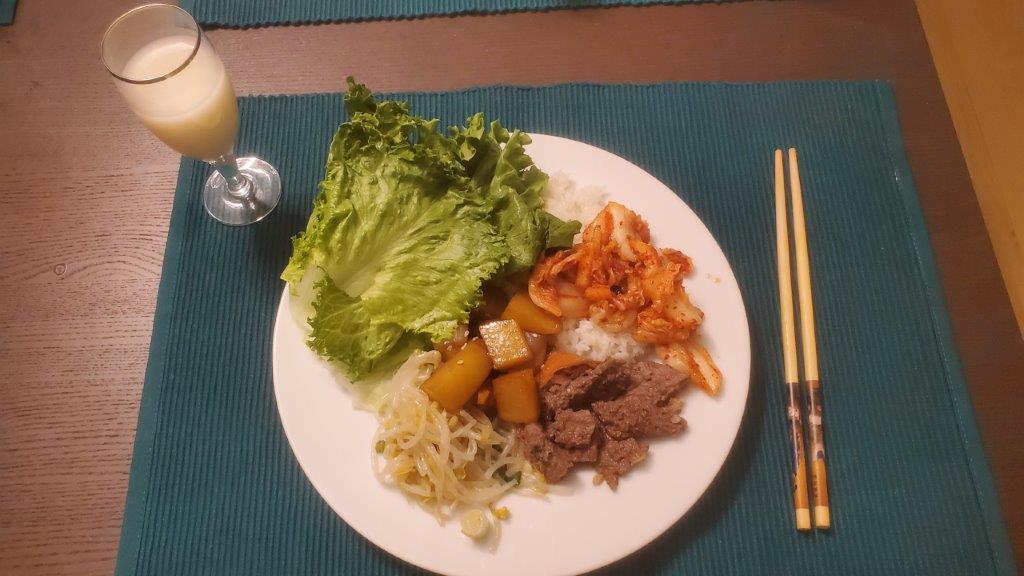
Om nom nom. This was SO good. My only complaint would be that I didn’t cook the potatoes long enough, so they were a bit too crunchy. But the flavor of everything was great, and in particular, we nailed the kimchi. Our guest (who we COMPLETLY FORGOT to take a picture with, as usual) said that she couldn’t believe we had done it ourselves from scratch, and that it was an excellent job.
Normally, I’d be concerned that she was just being polite, but not this time. We did an excellent job.
You may be wondering about the liquid in the glass. We had not one but TWO Korean beverages available for the meal.

The one on the left was brought by our guest, and is called Sujeonggwa, or cinnamon punch. It’s quite sweet, but it tastes of cinnamon and dried persimmon. In other words, it’s fall in a glass.
The one on the right is Makegolli, which is a fermented sparkling rice wine. Our guest was quite surprised that we had a bottle on hand, but it turns out there’s a local store quite close to us that specializes in making the stuff.
They’re also not technically allowed to sell alcohol for takeaway unless you buy food, because they are not a liquor store. So I bought a scone. They also have a basket of $1 Rice Krispie treats by the door, if you REALLY don’t want to shell out too much extra.
That aside, Makegolli is ALSO delicious. There’s a little chart on the bottle to show how the levels of “sour”, “sparkly” and “sweet” change over time. This was a quite young bottle, so “sweet” was the dominant of the three.
And finally, dessert! These tasty little packages, called gyeongdan, are just rice flour with a little sugar syrup inside, but they were a great conclusion to a hearty meal.
And that’s it for South Korea! We had a wonderful time with our guest, and will be eating leftover kimchi for WEEKS. Next up, we have to decide if we’re doing Kosovo – they’re recognized by more countries than not, but they aren’t on the UN list.
Recipes:
Kimchi
Bulgogi
Soy sauce potatoes
Seasoned mung beans

